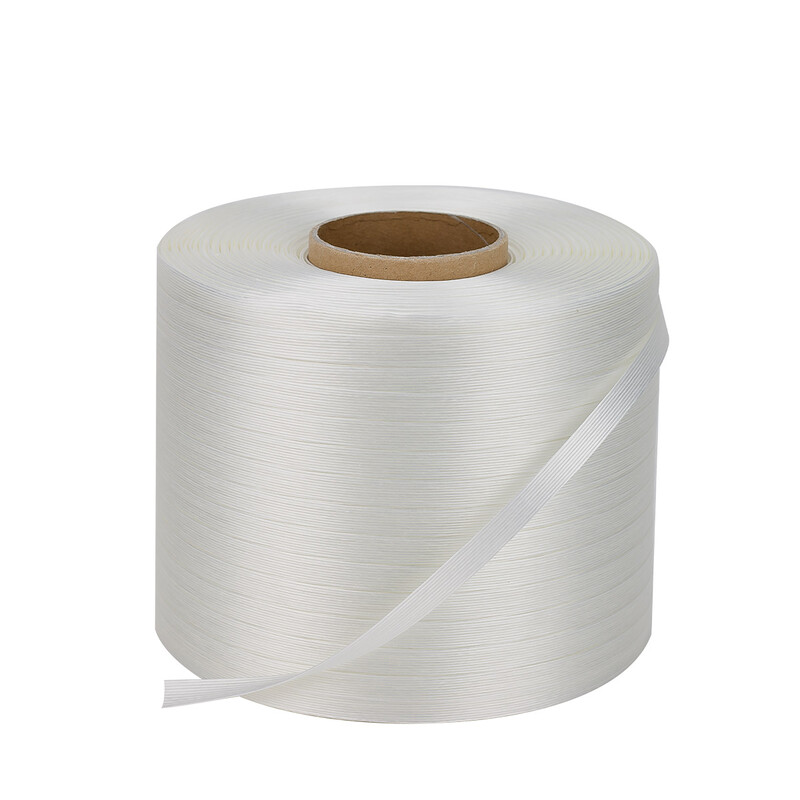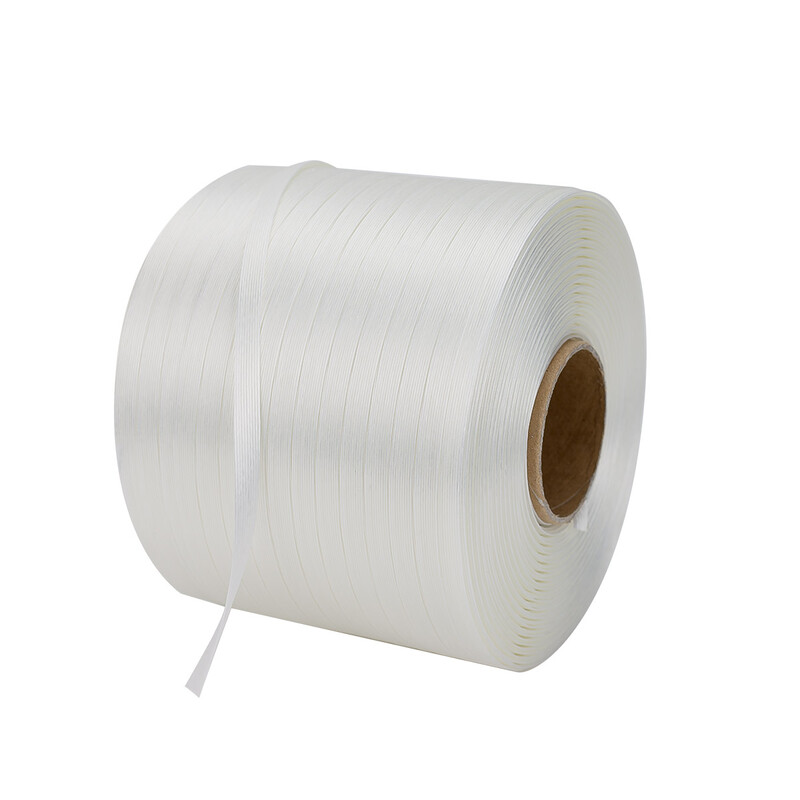The packaging industry has seen significant advancements over the years, with new technologies continuously improving efficiency and safety. Among these innovations, bonded strapping has emerged as a superior alternative to conventional manually applied products like steel straps, metal banding, rope, plastic straps, and stretch film. Bonded strapping offers numerous advantages, making it a game-changer in various sectors, including shipping, warehousing, and manufacturing.


#### What is Bonded Strapping?
Bonded strapping, often referred to as polyester strapping, is a type of packaging material made from high-tensile polyester fibers that are bonded together. This form of strapping is known for its strength, flexibility, and ease of use. Unlike traditional strapping methods, bonded strapping does not require metal seals or buckles, as the strapping material itself is strong enough to hold loads securely.
#### Advantages Over Steel Straps and Metal Banding
1. **Safety**: One of the primary advantages of bonded strapping over steel straps is safety. Steel straps can pose significant risks during application and removal due to their sharp edges and the potential for snapping under tension. Bonded strapping, on the other hand, is much safer to handle. It reduces the risk of cuts and injuries, making the workplace safer for employees.
2. **Corrosion Resistance**: Steel straps are prone to rust and corrosion, especially in humid environments or during long-term storage. Rust can weaken the straps and contaminate the goods they are securing. Bonded strapping is resistant to moisture and does not corrode, ensuring that the integrity of the packaging remains intact over time.
3. **Weight**: Steel straps are heavy and can add significant weight to the overall packaging. This can increase shipping costs and make handling more difficult. Bonded strapping is lightweight, reducing the overall weight of the packaged goods and making them easier to transport.
4. **Cost-Effective**: While the initial cost of bonded strapping may be higher than steel straps, the overall cost savings are significant. The reduced risk of injury, lower shipping costs due to decreased weight, and less damage to goods make bonded strapping a cost-effective solution in the long run.
#### Advantages Over Rope and Plastic Straps
1. **Strength and Durability**: Rope and traditional plastic straps often lack the strength needed for heavy-duty applications. Bonded strapping provides superior tensile strength, ensuring that even the heaviest loads are secured effectively. This makes it ideal for industries that require robust packaging solutions.
2. **Elasticity**: Unlike rope and some plastic straps that can stretch and lose tension over time, bonded strapping maintains its tension. This ensures that the load remains secure during transit, reducing the risk of movement and damage.
3. **Ease of Application**: Bonded strapping can be applied quickly and easily using manual or automated tools. This contrasts with the often labor-intensive process of tying ropes or using manual tensioners for plastic straps. The efficiency of bonded strapping application translates to time and labor savings.
#### Advantages Over Stretch Film
1. **Environmental Impact**: Stretch film is a common packaging material, but it generates a significant amount of plastic waste. Bonded strapping, being reusable and recyclable, presents a more environmentally friendly option. Companies looking to reduce their environmental footprint can benefit from switching to bonded strapping.
2. **Load Stability**: Stretch film relies on multiple layers to achieve load stability, which can be time-consuming and less effective for very heavy loads. Bonded strapping provides superior load stability with fewer materials, ensuring that goods remain secure without the need for excessive wrapping.
3. **Cost Savings**: Over time, the use of stretch film can become costly due to the sheer amount of material required for effective wrapping. Bonded strapping, with its durability and reusability, offers cost savings in material usage and reduces the frequency of reordering supplies.
#### Applications and Industries
Bonded strapping is versatile and finds applications in a wide range of industries. In the logistics and shipping sector, it is used to secure pallets, crates, and other large shipments. The construction industry utilizes bonded strapping to bundle materials like lumber and pipes. Additionally, the manufacturing sector benefits from bonded strapping for securing finished goods and raw materials.
#### Conclusion
Bonded strapping represents a significant advancement in packaging technology, offering numerous advantages over conventional methods such as steel straps, metal banding, rope, plastic straps, and stretch film. Its safety, strength, cost-effectiveness, and environmental benefits make it an ideal choice for modern packaging needs. As industries continue to seek more efficient and sustainable packaging solutions, bonded strapping is poised to play a crucial role in the future of secure and reliable load containment.

BSTSTRAP
No.30 building, Wuxing High-tech Venture Park
Huzhou City, Zhejiang Province,China
Whatsapp:+86 136 6574 4776
Monday to Saturday 9 am to 5 pm
hailey@bststrap.com
Send us your enquiry anytime
Others News
 Bonded Cord Strapping: The Tough, Strong and Safe Alternative to Polypropylene Strapping
Bonded Cord Strapping: The Tough, Strong and Safe Alternative to Polypropylene Strapping Bonded Cord Strapping Revolutionizes Construction and Materials Industries with its High-Strength, Weather-Resistant Features
Bonded Cord Strapping Revolutionizes Construction and Materials Industries with its High-Strength, Weather-Resistant Features Bonded Cord Strapping: A Versatile Solution for Everyday, Agricultural, and Baling Needs
Bonded Cord Strapping: A Versatile Solution for Everyday, Agricultural, and Baling Needs Bonded Cord Strapping: A Versatile and Cost-Effective Solution for Bundling and Securing
Bonded Cord Strapping: A Versatile and Cost-Effective Solution for Bundling and Securing